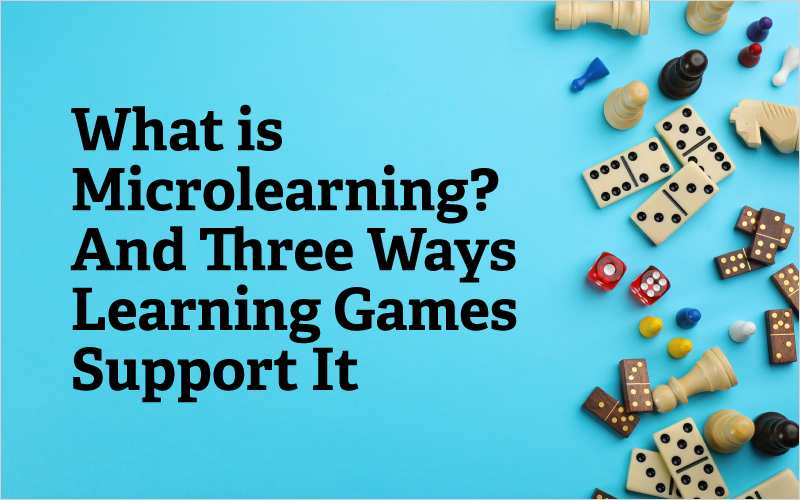Have you ever read a whole book in one sitting? Ok, besides when Harry Potter came out, have you ever read a textbook or your training material all in one sitting? Probably not. If you ingest that much information in one sitting, you’ll likely forget most of it.
Even if you did read that Harry Potter book in one go, you probably didn’t remember many of the details, chapter titles, etc.
Sure, you may have remembered the main themes and plot points, but what if I were to test you on that book immediately after you read the whole thing? It’s probably not going to go that well.
When we’re trying to impart knowledge to our learners, we want the details to stick with them. The fact that they simply did the training isn’t good enough. How can we ensure the training we create for our learners sticks? We can use microlearning by harnessing the power of games.
What is Microlearning?
Microlearning makes training digestible by breaking things down into smaller bites.
It makes learning digestible by providing smaller amounts of information that the learner can quickly absorb. Things like a video, an image, a song, a quiz, or a game—but let’s not get ahead of ourselves. These mediums can impart a few ideas to our learners in an engaging, memorable way. Microlearning helps learners avoid cognitive overload, where so much is being thrown that it just goes in one ear and out the other.
Showing your learners an image with a couple of key concepts on it, then asking several questions immediately after, is microlearning. You’ve presented the idea, asked the learner to comprehend it, and asked them to recall the information by quizzing them, thus reinforcing the information.
If you want to take it to the next level, gamify it! Making the quiz interactive by awarding points for correct answers and displaying the standings at the end of the test can further motivate and engage your learners.
Why Do We Need Microlearning?
Our shrinking attention spans are what’s making microlearning so popular. If you can believe it, the average attention span these days is about eight seconds, and it’s shrinking all the time.
Let’s face it, even if your training material is great, no one’s going to stand in line to read the next version of your employee handbook like we waited in line for the next Harry Potter book.
How can we incorporate microlearning into our training regimens and capitalize on its power? We can use games and gamification.
Three Reasons Learning Games are Good for Microlearning
With a constant pull on our attention, our minds find it harder and harder to sit and focus on one thing at a time. And, if we can find the time and focus, we don’t find much of it. As educators and trainers, we must make the most of these moments.
Microlearning is the means to capture these moments, and games are the best way to implement learning. Games can:
- Quickly impart ideas
- Provide instant feedback
- Make the training more engaging
With The Training Arcade, you can quickly and easily load your training materials into games. Things like images, PDFs, videos, or audio files can be added with the click of a button, and then your learners can be quizzed on that material all while they’re “playing a game.”
Instead of waiting for you to grade it and hand it back, the feedback is instant, and you can add additional corrective feedback as well.
In addition, by harnessing the power of gamification, you can entice your learners to keep interacting with the training materials to reinforce their knowledge.
Become a Training Hero
Don’t grab your learner’s attention with a 45-slide PowerPoint presentation, use a three-minute Jump game, or a quick round of JEOPARDY!® instead. Go on, teach a few key concepts to your learners before they get distracted again.
Try a free 30-day trial of The Training Arcade®. Game on!








